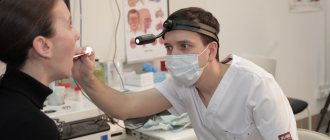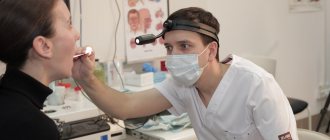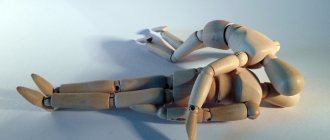Types of whooping cough
Doctors distinguish 3 types of whooping cough. The first is the typical type, when the symptoms manifest themselves clearly. The second is the atypical type, when the symptoms are erased. The third is whooping cough in vaccinated patients.
Based on the severity of the disease, the number and duration of coughing attacks, mild, moderate and severe forms of whooping cough are distinguished. Moderate and severe forms of infection are usually diagnosed in children under 5 years of age and require hospitalization. Mild forms of whooping cough usually occur in adults and can be treated at home within 5-6 weeks.
Epidemiologists identify several features of whooping cough. This disease intensifies in waves every 3-4 years. Epidemics usually begin in children's educational institutions - kindergartens, educational centers, and less often - in schools. At the beginning of winter, against the background of a temporary decrease in immunity in children, the disease affects the maximum number of people, but the most severe symptoms of the infection appear in the summer when the weather is hot.
Symptoms
The victims of whooping cough pathogen are usually young children. Immunity to the disease is not transmitted through mother's milk, so the likelihood of the disease in childhood is high. Children who attend kindergarten or developmental centers often get sick, but you can also become infected on the playground while walking or when interacting with guests at home.
Most often, whooping cough occurs once in a lifetime. Antibodies produced during illness last a lifetime and prevent re-infections. With immunodeficiency, sometimes a person can get sick again, but such cases are rare.
Adults suffer from whooping cough in a mild form, the disease manifests itself in the form of a moderate cough and a slight runny nose.
The main symptom of whooping cough is a paroxysmal cough.
The incubation period is from 3 to 14 days. Then a mild, gradually intensifying dry cough begins. Children usually develop a runny nose. Nasal discharge is thick and viscous. It is possible to increase the temperature to 38°, but not necessarily. A temperature above 38° means that the body, weakened by whooping cough, has been attacked by other bacteria or viruses. The catarrhal period usually lasts up to 15 days.
Then the cough intensifies and becomes spasmodic. Coughing attacks are especially severe at night. Cough during the spasmodic period is difficult to treat, as it is caused by several reasons. Firstly, thick sputum accumulates in the bronchi and lungs, which is difficult to remove. Secondly, the bordetella bacillus secretes a toxin that acts on the vagus nerve. The nerve is responsible for the functioning of the larynx, pharynx, skeletal muscles, digestive and respiratory organs. Irritation of the nerve causes spasms that cause coughing attacks.
Over time, a dry spasmodic cough causes pain in the abdominal muscles and intercostal muscles. Chest pain is noted, especially during sharp exhalations and long bouts of coughing. Breathing becomes wheezing and hoarse. The throat hurts not only during an attack, but constantly. Vomiting is possible during coughing attacks. Swelling of the face and neck, caused by narrowing of facial vessels, is often observed; hemorrhages are possible on the skin and mucous membranes, in the eyes. Veins become more visible. The face swells, the eyes water. In case of diseases of the cardiovascular system, a severe coughing attack may intensify symptoms, heart rhythm disturbances and increased blood pressure. Increased nervous excitability is also noted. Neurosis and dizziness may occur. Sometimes children faint after a prolonged, severe cough. This period lasts up to 30 days.
Then comes the period of recovery. The cough becomes wet and sputum is released. A runny nose may recur, as the body tries in every possible way to remove the mucus. Weakness may persist for a long time even after other symptoms of whooping cough have disappeared.
After vaccination, immunity does not last throughout life, but the symptoms of the disease do not appear so clearly. Previously vaccinated people may have an asymptomatic course of the disease or a mild cough. There are also cases of carriage of the infection, when the carrier is not sick himself, but is a threat to others. Most often, vaccinated people who work with young children become carriers.
Causes of parawhooping cough in children
The disease is transmitted by airborne droplets. The source of infection can be either a sick person or a carrier of the bacteria. You need to know how whooping cough differs from parawhooping cough in children in order to make the correct diagnosis. In the first case, the causative agent is the immobile gram-negative bacillus Bordetella pertussis, and in parapertussis it is Bordetella parapertussis. Despite the identity between them, the difference lies in the antigenic structure and pathogenicity.
To transmit the bacterium from a carrier to a healthy person, a distance of 2.5 m is sufficient. A person can sneeze, cough or just have a conversation, and at this time the Bordetella parapertussis bacillus begins to migrate to another organism. In the external environment, it quickly dies, unable to withstand the influence of ultraviolet radiation, drying and other environmental conditions. In direct sunlight, 1 hour is enough, and at a temperature of +56 degrees, a similar effect occurs within 15-30 minutes.
Diagnostics
must be carried out by a doctor. Self-medication can lead to complications, especially in childhood. Coughing attacks in young children should alert parents and prompt them to see a doctor to examine the baby.
At first, whooping cough is often confused with a common cold or ARVI, since the symptoms of the onset of the disease are similar. Cough, runny nose and slight fever with whooping cough often do not attract attention. Pertussis cough cannot be treated for a long time; the lingering nature of the cough often becomes the reason for visiting a doctor.
Sputum analysis helps to accurately identify the causative agent of whooping cough. If sputum does not come out even during an attack, a swab is taken from the throat. A blood test shows the number of white blood cells and helps determine the extent of the disease. Laboratory diagnostics also show the presence of antibodies. They can be used to determine whether the patient has been sick before or whether he was vaccinated in childhood.
A pediatrician diagnoses whooping cough in children and a therapist in adults. Additionally, consultation with an infectious disease specialist, neurologist, or immunologist may be required.
FAQ
What are the stages of whooping cough?
Three stages of whooping cough:
- First stage.
Symptoms similar to a cold.
- Second stage.
Paroxysmal barking cough and other symptoms such as vomiting and exhaustion.
- Third stage.
Slow recovery, less frequent and severe cough.
How do the first signs of whooping cough appear?
- The first symptoms of whooping cough include:
- runny nose,
- elevated temperature,
- periodic cough, worse at night, reminiscent of barking.
How can you be sure that your child definitely has whooping cough?
To know for sure that it is whooping cough, show your child to the doctor. The doctor will take a nasal swab and send the sample to a laboratory to be tested for pertussis bacteria.
Is whooping cough dangerous?
Yes. Whooping cough is a serious illness for children, adolescents and adults, but it is most dangerous for babies under 6 months of age.
Treatment
Depending on the severity of symptoms, both home treatment and hospitalization are possible. The latter option is recommended for young children and adults with immunodeficiency.
The main treatment is medication. The patient is prescribed antibiotics that are active against the bacteria Bordetella pertussis. They are usually taken for 7 days. At the initial stage of the disease, when the pathogen has not yet been precisely identified, broad-spectrum antibiotics with a longer course may be prescribed.
Depending on the symptoms, other medications are also prescribed. Neuroleptics reduce the effect on the nervous system, remove neuroses and seizures. For severe vomiting during attacks, antiemetic drugs are prescribed. In case of weakened immunity, immunomodulators are prescribed. For hemorrhages, medications are prescribed that improve the condition of blood vessels. If sputum cannot be separated, expectorants are prescribed.
It is important to follow a gentle regimen. Rest, daytime sleep are recommended, and in the absence of high temperature, light walks without contact with other people. Meals should be light, rich in vitamins.
It is important to create optimal conditions for the patient. The room must be ventilated, but avoid drafts. It is important to maintain optimal temperature conditions. The heat in the room increases swelling, increases body temperature, phlegm and mucus in the nose becomes thicker and is difficult to separate. Cold intensifies chills and cramps and provokes coughing attacks.
The patient’s nervous system is very shaken, so it is necessary to remove all possible irritants. Light is needed soft, diffused. Loud sounds from music, conversations, or television should be muted. A sick child should be protected from communication with other children; he needs peace.
A baby with whooping cough should not be weaned during the period of illness and recovery. Mother's milk improves the baby's immunity. Refusal to breastfeed during this period will increase existing symptoms and negatively affect the state of the nervous system. During illness, the baby should be breastfed according to his desire, and not according to a schedule. Due to difficulty breathing and coughing, the baby cannot suckle milk for a long time, so it should be fed more often in small portions. If the baby is weak, the mother should express milk into a bottle. This makes it easier for the child to get the necessary portion of food.
The key to successful treatment will be protecting the patient from all kinds of bacteria and viruses. A weakened body cannot resist infection and suffers even from those pathogens that were previously not scary to it. Scratches and abrasions should be avoided. Toys and especially pacifiers need to be disinfected. It is important to clean the nursery daily with bactericidal, but not toxic, agents. Strong smells from cleaning products can worsen coughs and runny noses. Contact with other patients should be stopped. Adults caring for a sick child should wash their hands thoroughly, wear only clean and ironed clothing, and carefully monitor their health.
Which doctor should I contact?
The pediatric department of JSC "Medicine" (clinic of Academician Roitberg) in the Central Administrative District employs qualified pediatricians and infectious disease specialists. Parapertussis in children symptoms and treatment at home without medical supervision are similar to acute respiratory infections, which is a mistaken point. If a child has a cough with difficult sputum, it does not go away for a long time, attacks are repeated 5-7 times a day, a medical examination is needed. From the very beginning, such symptoms are addressed to pediatricians, who can then refer to an infectious disease specialist. Depending on the course of the disease, additional assistance may be required from related specialists - an otolaryngologist and a pulmonologist.
Complications of whooping cough
With adequate treatment of whooping cough and normal immunity, the disease proceeds without complications.
In complex forms, the disease can cause:
- lung diseases, including pneumonia;
- pleurisy;
- otitis;
- deafness;
- rupture of the membrane in the ear;
- hemorrhages in the brain and retina;
- nosebleeds;
- inguinal or umbilical hernia;
- convulsions;
- epileptic seizures;
- neuroses.
Consultation with other specialists
In case of complications, consultation with specialists is indicated. In case of brain damage, neuroses and prolonged convulsions, consultation with a neurologist is necessary. For otitis media, hearing impairment and rupture of the eardrum, see an otolaryngologist. A pneumologist will help with lung diseases. When an inguinal or umbilical hernia forms, a surgeon is needed.
Prevention
Whooping cough is a serious disease, so prevention is required. Vaccination is considered the most reliable form of prevention. The vaccine does not provide lifelong immunity to whooping cough, but significantly reduces the severity of the disease. Deaths among previously vaccinated children are very rare.
Whooping cough in Russia is a controlled infection. It is monitored by Rospotrebnadzor, but despite this, whooping cough remains an urgent problem. In connection with this, a draft clinical recommendation “Whooping cough in children” has been developed, which contains information on the specific prevention of whooping cough with vaccines registered in the Russian Federation, allowing vaccination and revaccination of children at any age. According to this project, the following drugs and their administration regimens can be used to prevent whooping cough in our country:
- DTP – in children from 3 months to 3 years 11 months 29 days
- Infanrix Hexa-in children from 3 to 36 months
- Infanrix and Pentaxim - for children from 3 months onwards according to the vaccination calendar. But if the immunization deadlines are violated, the use of these vaccines is possible for up to 6 years.
- Adacel is used from 4 years to 64 years of age for revaccination against whooping cough, diphtheria and tetanus.
First of all, the following are subject to revaccination:
- Patients with chronic diseases
- Children previously initially vaccinated with acellular vaccines (Infanrix, Infanrix Hexa and Pentaxim)
- Children from large families
- Children living in closed institutions
- Adults – employees of medical, educational, boarding institutions, social security institutions
- Adults in families with newborn children and unvaccinated infants under 1 year of age
- Women planning pregnancy
How to make an appointment with a pediatrician
At (academician Roitberg’s clinic) you can make an appointment with a pediatrician to determine your health status and make a diagnosis if you suspect a disease. The doctor will conduct a diagnosis and advise how to treat parawhooping cough in a child on an outpatient basis. If you need a face-to-face consultation with an infectious disease specialist or another doctor with a narrow specialty, you can get an appointment with such doctors, as well as get tested for whooping cough and parawhooping cough in children, at any convenient time.
On the clinic’s website, in the special “Make an appointment with a doctor” form, you can leave information for feedback. The administrator will call you back to agree on a convenient date and time. You can ask questions about services and the terms of their provision by calling the phone number: +7 (495) 995-00-33. The clinic is located within walking distance from the Mayakovskaya, Novoslobodskaya, Belorusskaya, Tverskaya, and Chekhovskaya metro stations. Come for a consultation, diagnosis and treatment of children at the address: 2nd Tverskoy-Yamskaya Lane, building 10. The clinic employs highly qualified doctors who can not only diagnose and treat, but also find an approach to each little patient.








